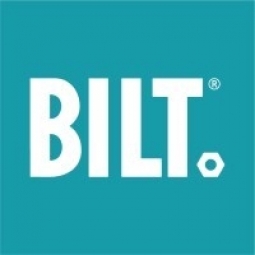技术
- 传感器 - 气体传感器
- 传感器 - 电表
适用行业
- 消费品
- 零售
适用功能
- 采购
- 质量保证
用例
- 虚拟原型与产品测试
- 视觉质量检测
服务
- 测试与认证
关于客户
本案例研究中的客户是一位主要的电子商务先驱,以利用技术改善数百万客户的在线和移动购物体验而闻名。该公司致力于分析购买模式和消费者行为,以发现趋势和竞争优势,从而增强购物体验并促进销售。该公司对创新和客户满意度的承诺使其发现了 BILT(一款提供 3D 交互式组装说明的应用程序)的潜力,可以改变购买后体验并激发消费者信心。
挑战
一家领先的电子商务公司以其创新地使用技术来增强数百万客户的在线和移动购物体验而闻名,该公司正在寻找通过提供购买后体验的透明度来影响购买过程的方法。该公司分析了 10,000 多个品牌的超过 1200 万种产品的购买模式。分析显示,消费者对平板包装产品的质量越来越有信心,但运费和装卸费是购买的一大障碍。此外,虽然越来越多的产品经过重新设计以提高运输效率,但这些产品通常需要消费者在家组装。需要复杂组装的产品让消费者望而却步,可能会阻碍购买。对于供应商和消费者来说,退货的成本也很高。
解决方案
这家电子商务公司发现,一个品牌(木炭、燃气和电动户外烧烤炉的全球领先品牌)的表现优于其他品牌。该类别中表现最好的产品是 BILT,这是一款为数千种消费产品提供 3D 交互式组装说明的应用程序。 BILT 平台通过语音和文本引导的自定进度指令,让用户能够缩放、旋转并从各个角度查看产品的每个部分,从而使客户能够高效、成功地完成最复杂的装配。该零售商决定将 30 个带有 BILT 组装说明的燃气烤架分配给一个测试组,以测试 BILT 3D 交互式组装体验的影响。在这些烤架的产品信息页面上,零售商添加了展示 BILT 交互式说明的图像和视频,希望激发消费者的信心,并向购物者保证烤架公司在产品设计和易于组装方面优先考虑客户体验。
运营影响
数量效益

Case Study missing?
Start adding your own!
Register with your work email and create a new case study profile for your business.
相关案例.
.png)
Case Study
Improving Vending Machine Profitability with the Internet of Things (IoT)
The vending industry is undergoing a sea change, taking advantage of new technologies to go beyond just delivering snacks to creating a new retail location. Intelligent vending machines can be found in many public locations as well as company facilities, selling different types of goods and services, including even computer accessories, gold bars, tickets, and office supplies. With increasing sophistication, they may also provide time- and location-based data pertaining to sales, inventory, and customer preferences. But at the end of the day, vending machine operators know greater profitability is driven by higher sales and lower operating costs.

Case Study
Improving Production Line Efficiency with Ethernet Micro RTU Controller
Moxa was asked to provide a connectivity solution for one of the world's leading cosmetics companies. This multinational corporation, with retail presence in 130 countries, 23 global braches, and over 66,000 employees, sought to improve the efficiency of their production process by migrating from manual monitoring to an automatic productivity monitoring system. The production line was being monitored by ABB Real-TPI, a factory information system that offers data collection and analysis to improve plant efficiency. Due to software limitations, the customer needed an OPC server and a corresponding I/O solution to collect data from additional sensor devices for the Real-TPI system. The goal is to enable the factory information system to more thoroughly collect data from every corner of the production line. This will improve its ability to measure Overall Equipment Effectiveness (OEE) and translate into increased production efficiencies. System Requirements • Instant status updates while still consuming minimal bandwidth to relieve strain on limited factory networks • Interoperable with ABB Real-TPI • Small form factor appropriate for deployment where space is scarce • Remote software management and configuration to simplify operations

Case Study
Digital Retail Security Solutions
Sennco wanted to help its retail customers increase sales and profits by developing an innovative alarm system as opposed to conventional connected alarms that are permanently tethered to display products. These traditional security systems were cumbersome and intrusive to the customer shopping experience. Additionally, they provided no useful data or analytics.

Case Study
How Sirqul’s IoT Platform is Crafting Carrefour’s New In-Store Experiences
Carrefour Taiwan’s goal is to be completely digital by end of 2018. Out-dated manual methods for analysis and assumptions limited Carrefour’s ability to change the customer experience and were void of real-time decision-making capabilities. Rather than relying solely on sales data, assumptions, and disparate systems, Carrefour Taiwan’s CEO led an initiative to find a connected IoT solution that could give the team the ability to make real-time changes and more informed decisions. Prior to implementing, Carrefour struggled to address their conversion rates and did not have the proper insights into the customer decision-making process nor how to make an immediate impact without losing customer confidence.









